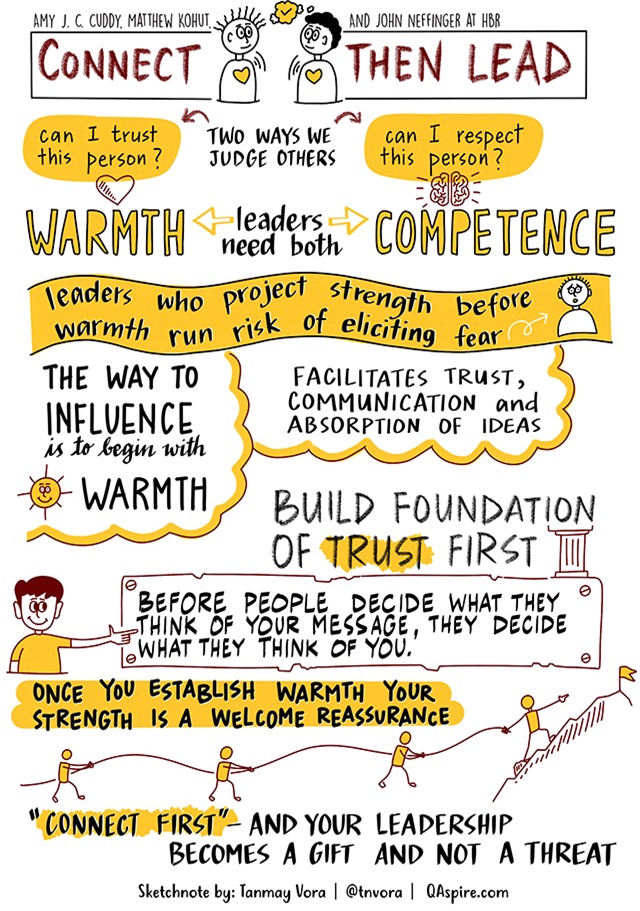Leadership Starts With Trust
Tanmay Vora
In my last post, I touched upon how leaders can build their influence by focusing on their being rather than chasing the goal of becoming influential. Real influence is a by-product of being, not just doing.
If there is no leadership without influence, there is no influence without a strong foundation of trust.
Our first instinct as human beings when we assume a leadership role is to show our strength, competence and skills and prove a point about our fitment to the role. Strength can be the starting point of leadership journey, but ultimately strengths only shine on the foundation of trust.
In one of the organizations I worked many years back, the head of our global sales team was promoted to being a CEO. When he first met his direct reports, he talked excessively about his glorious past, great transformations and results he had generated. After requesting a super-short template introduction from his direct reports, he straight away jumped into what he wanted to achieve, metrics, missing processes and his aggressive plans to transform the organization. He was surely well-intentioned, but his approach led to fear and dispassionate compliance to his plans. For him, the road to building trust was long, rough and bumpy.
In this context, I read a classic Harvard Business Review article titled “Connect, Then Lead” by Amy Cuddy, Matthew Kohut and John Neffinger which says,
A growing body of research suggests that the way to influence—and to lead—is to begin with warmth. Warmth is the conduit of influence: It facilitates trust and the communication and absorption of ideas. Even a few small nonverbal signals—a nod, a smile, an open gesture—can show people that you’re pleased to be in their company and attentive to their concerns. Prioritizing warmth helps you connect immediately with those around you, demonstrating that you hear them, understand them, and can be trusted by them.
One of the biggest challenges for leaders is to create an ecosystem where people exercise their discretion (tapping into intrinsic motivations). Trust is a good place to start.
Vijay Govindrajan, professor at The Tuck School of Business calls it “Emotional Infrastructure” – which is an aggregation of positive feelings employees have for the organization and each other. In a new now, a leader’s role is to build a ecosystem of engagement where people show up (read subscribe) to do their best work.
In his paper “The Emotionally Bonded Organization: Why Emotional Infrastructure Matters And How Leaders Can Build It”, Vijay Govindrajan says,
In comparison to physical and intellectual infrastructure, emotional infrastructure is the most time-intensive and the most difficult to build. Yet the factors that create emotional infrastructure are not visibly manifest to an outsider and hence it is the most difficult for a competitor to copy, yielding a sizable and sustainable competitive advantage.
Trust is at the heart of building an emotional infrastructure. I strongly recommend that you read the HBR article “Connect, Then Lead” for rich insights on this topic.
Here is a short summary of key insights that stood out for me from the article in a sketch note form.
